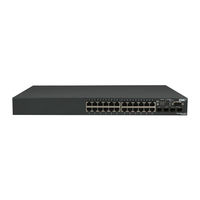SMC Networks TigerStack III SMC6824MPE Manuals
Manuals and User Guides for SMC Networks TigerStack III SMC6824MPE. We have 4 SMC Networks TigerStack III SMC6824MPE manuals available for free PDF download: Management Manual, Installation Manual, Specification Sheet
SMC Networks TigerStack III SMC6824MPE Management Manual (608 pages)
24-Port Fast Ethernet Switch
Brand: SMC Networks
|
Category: Network Router
|
Size: 7 MB
Table of Contents
Advertisement
SMC Networks TigerStack III SMC6824MPE Management Manual (570 pages)
24-Port Fast Ethernet PoE Switch
Brand: SMC Networks
|
Category: Switch
|
Size: 6 MB
Table of Contents
SMC Networks TigerStack III SMC6824MPE Installation Manual (86 pages)
Stackable 24-Port Fast Ethernet PoE Switch
Brand: SMC Networks
|
Category: Switch
|
Size: 1 MB
Table of Contents
Advertisement
SMC Networks TigerStack III SMC6824MPE Specification Sheet (2 pages)
24-Port 10/100 Stackable Managed Switch with POE
Brand: SMC Networks
|
Category: Switch
|
Size: 0 MB



